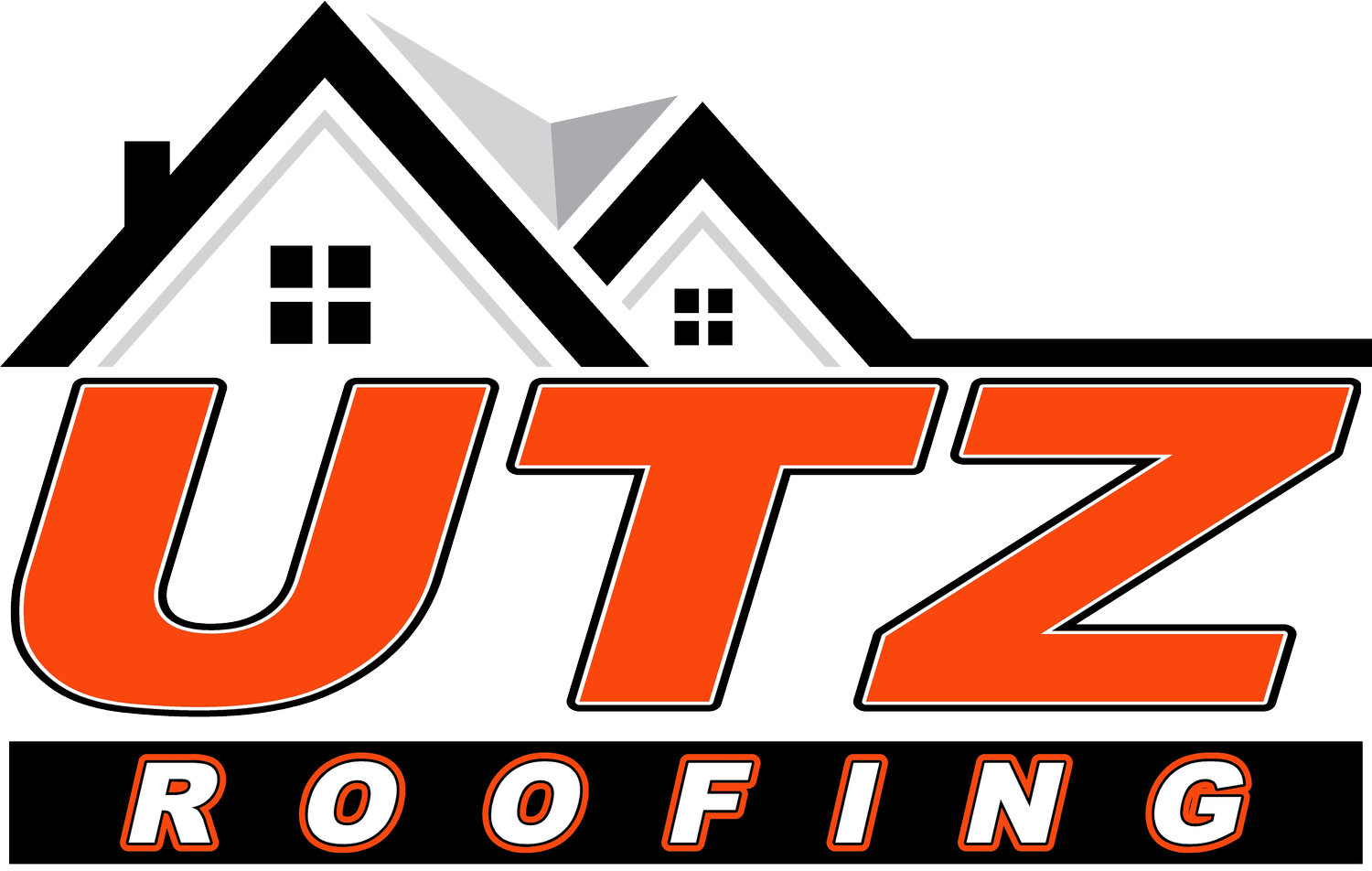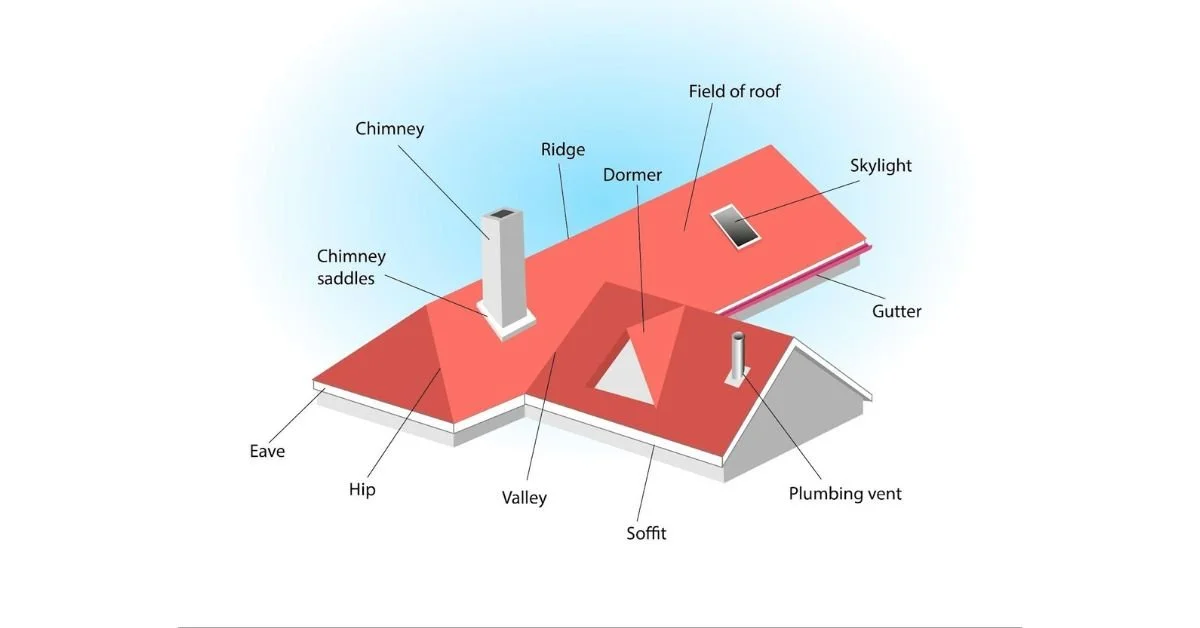Why Chimney and Roof Intersection Inspections Are Critical
For homeowners in Villa Ridge and the surrounding Missouri communities, the chimney-to-roof intersection is one of the most overlooked but critical parts of a roofing system. While many people focus on shingle wear or gutter health, they often don't realize how much damage can start right where the chimney meets the roof.
A thorough chimney roof inspection ensures your home stays safe, dry, and energy efficient. In this article, Utz Roofing explains the warning signs, potential risks, and key focus areas every homeowner should know.
What Is a Chimney Roof Inspection?
The intersection between your chimney and roof involves multiple layers of materials—flashing, mortar, and shingles—that must work together seamlessly. Any breakdown in these components can allow water, pests, or cold drafts into your home.
A chimney roof inspection evaluates:
The condition of the metal flashing that seals the joint.
The stability of the chimney's mortar and brickwork.
Signs of leaks or water damage in the nearby roofing materials.
Proper ventilation for smoke and gases.
By performing regular inspections, homeowners can prevent small issues from becoming costly, large-scale repairs.
Common Problems Found During Inspections
Homeowners often assume that chimney damage only happens inside the flue. In reality, many of the most expensive issues start right at the roofline.
Common problems include:
Cracked or Pulled Flashing: Metal flashing can warp, rust, or pull away from the bricks, opening a path for water.
Mortar Deterioration: Gaps in the mortar between bricks (from age or weather) act like a sponge, drawing water in.
Shingle Wear: Heat from the chimney and concentrated water runoff can cause shingles around the chimney to fail faster.
Failed Seals: Caulk or tar applied as a "quick fix" by a previous owner often cracks and fails, hiding a deeper problem.
A professional inspection can identify and properly address these issues before they cause structural damage.
The #1 Risk: Water Damage and Hidden Leaks
One of the biggest risks at the chimney intersection is water infiltration. When flashing or mortar fails, rainwater seeps behind roofing materials and can spread deep inside your home's structure.
Be on the lookout for these signs:
Stains on the ceiling or walls near the chimney.
Mold or mildew growth in the attic.
Damp or soft wood rafters around the chimney's base.
Because water spreads silently, scheduling a chimney roof inspection at least once a year helps protect your home from hidden, costly damage.
Is Your Chimney Structurally Sound?
A chimney is a heavy masonry structure. Any leaning, cracking, or shifting can compromise both the chimney itself and the roof that supports it.
During an inspection, professionals check for:
Leaning or separating from the roofline.
Cracked bricks or "spalling" (flaking or chipping).
Settling that puts strain on the flashing and shingles.
Catching these structural issues early can save Villa Ridge homeowners thousands of dollars in major repairs.
A Deep Dive into Flashing and Sealants
Flashing is the thin layer of metal installed around the chimney base to seal it against water. Without proper installation and maintenance, flashing failure is almost guaranteed.
A thorough inspection looks at:
Step Flashing: The L-shaped metal pieces woven into the shingle courses.
Counter-Flashing: The metal embedded into the chimney's mortar to cover the step flashing.
Sealant Performance: Checking the condition of any sealants used.
Replacing or resealing flashing during a routine inspection is a simple, affordable task that prevents expensive, large-scale leaks.
Shutterstock
More Than Just Leaks: Ventilation and Drafting
A healthy chimney doesn't just keep water out—it must also allow smoke, gases, and heat to exit properly. Poor drafting can affect your fireplace's performance and your home's air quality.
A professional inspection service will often:
Check that vents and the chimney cap are unobstructed.
Ensure the chimney height is correct relative to the roof's slope.
Look for creosote buildup that could impact the draft and pose a fire risk.
Is Your Chimney Causing High Energy Bills?
Gaps and leaks around your chimney are often overlooked sources of major heat loss in the winter and heat gain in the summer.
An inspection can reveal:
Insulation voids near the chimney chase.
Air leaks from poorly sealed flashing.
Heat transfer through deteriorating masonry.
By addressing these issues, Villa Ridge homeowners can reduce their energy bills and improve their home's comfort.
Why Missouri's Seasons Are Tough on Chimneys
Missouri weather puts unique stress on chimney and roof intersections. Heavy rains, ice dams, and high winds all increase the risk of damage.
Spring Storms: Can lift or displace flashing with high winds.
Summer Heat: Bakes and cracks old caulk and sealants.
Winter Ice: Freeze-thaw cycles can crack mortar and bricks.
Scheduling an inspection after major seasonal shifts helps prevent hidden problems from escalating.
The Dangers of a "Quick Fix": Why DIY Isn't Enough
Some homeowners try to apply caulk or tar around their chimney as a quick fix. Unfortunately, these materials don't last under Missouri’s climate and often just trap moisture, making the problem worse.
Professional inspection offers:
Trained eyes to spot subtle issues you might miss.
Access to roofing-grade safety equipment.
Long-term solutions and proper materials, not temporary patches.
Relying on DIY fixes risks overlooking deeper structural or water issues.
Protecting Your Property Value
Ignoring chimney-to-roof issues can reduce your property value and lead to staggering repair costs down the line.
The benefits of a regular inspection include:
Preventing costly ceiling and drywall repairs.
Protecting your roof deck and structural supports from rot.
Preserving your home's resale value.
A well-documented inspection history can also strengthen an insurance claim if storm damage occurs.
Our Approach: The Utz Roofing Chimney Inspection
At Utz Roofing, we understand how important a chimney roof inspection is for maintaining your home. We serve Villa Ridge and nearby communities with:
Comprehensive Inspections: Covering the chimney's structure, flashing, and surrounding roofing materials.
Detailed Reports: Complete with photos and clear explanations of our findings.
Tailored Solutions: From minor flashing repairs to complete roofing system updates, we recommend only what you need.
When you schedule an inspection with Utz Roofing, you get peace of mind knowing every critical area has been evaluated by trusted professionals.
Common Questions About Chimney & Roof Problems
1. My chimney is leaning. How dangerous is this?
This is extremely dangerous. A leaning chimney is a sign of a major structural failure, either in the chimney's foundation or in the roof supporting it. Do not wait. A collapse can be catastrophic, taking a large part of your roof with it. It needs to be inspected by a professional mason or structural engineer immediately.
2. I had my chimney's mortar repaired (repointed), but it's still leaking. What's wrong?
This is a very common problem! It almost always means the leak isn't from the mortar, but from the metal flashing. The flashing is the system of metal sheets that seals the intersection between the roof and the chimney. If it's old, rusted, or was installed incorrectly, no amount of mortar repair will stop the leak. You need a roofing professional to inspect the flashing.
3. I see a gap between my chimney and the roof. Is this a big deal?
Yes. Any gap, no matter how small, is a direct entry point for water, insects, and rodents. This is a sign that the sealant or flashing has failed. It needs to be properly sealed by a professional—a simple caulk line is a temporary fix that will likely fail and trap moisture, making the problem worse.
4. What are these reddish-brown rust stains on my roof coming from the chimney?
Those stains are almost always from a failing chimney cap (the metal cover on top) or from rusting metal flashing. As the metal corrodes, rain washes the rust down your roof, staining the shingles. It's a clear sign that your flashing or cap is failing and needs to be replaced before it causes a major leak.
5. My roofer said the chimney needs to be rebuilt from the roofline up. Is this a scam?
It's usually not a scam; it's just expensive. This is often required when the bricks and mortar above the roof are so deteriorated from freeze-thaw cycles that they are crumbling and can't be repaired. If the bricks are "spalling" (flaking) and the mortar is falling out in chunks, a simple "repointing" won't hold. A rebuild is the only safe, long-term solution.
Conclusion: Protect Your Home with Regular Inspections
Your roof’s connection to your chimney is a vital but vulnerable spot. Left unchecked, small leaks or mortar cracks can lead to major damage. That’s why scheduling a professional chimney roof inspection at least once a year is essential for Villa Ridge homeowners.
From protecting against leaks to improving energy efficiency and ensuring safety, these inspections are a core part of responsible roof care. Utz Roofing is here to help you stay proactive and confident in the health of your home.
Ready to schedule your professional chimney roof inspection? Contact Utz Roofing today.



